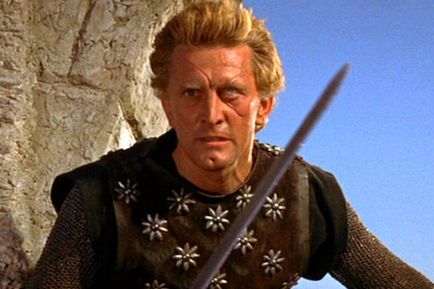
Posted on 10/21/2015 2:09:26 PM PDT by SunkenCiv
A hiker travelling the ancient route between western and eastern Norway found a 1,200-year-old Viking sword after sitting down to rest after a short fishing trip.
The sword, found at Haukeli in central southern Norway will be sent for conservation at the The University Museum of Bergen.
Jostein Aksdal, an archeologist with Hordaland County said that the sword was in such good condition that if it was given a new grip and a polish, it could be used today.
"The sword was found in very good condition. It is very special to get into a sword that is merely lacking its grip," he said.
"When the snow has gone in spring, we will check the place where the sword was found. If we find several objects, or a tomb, perhaps we can find the story behind the sword," he said.
He said that judging by the sword's 77cm length, it appeared to come from 750-800AD.
"This was a common sword in Western Norway. But it was a costly weapon, and the owner must have used it to show power," he said.
(Excerpt) Read more at thelocal.no ...
That new Last Kingdom series in BBC America is great
No PC
no stupid chick crap
No fags at least not yet
No sub Saharan blacks were they don’t belong historically
No bashing Catholic Church so far
And so forth
It I think chronicles the rise of Alfred the Great through a Saxon boy raised by the same Danes who killed his Earl daddy
Very well done
Narcos on Netflix is another great great series
A+++
My understanding is that it is the blade shape that defines the weapon more than the period of manufacture. This is a long, single bladed weapon - essentially an elongated Bowie knife.
http://www.vikingage.org/wiki/index.php?title=Seax
Which, of course leads to REPUTATION...that one is the closer.
He should check around for a misplaced hammer by a guy named Thor....
A relic from their last Super Bowl appearance?
A wing of A’10s at my beck and call would be my preferred method of showing power.
Great movie. I've always liked Jim Caviezel's work.
“Which, of course leads to REPUTATION...that one is the closer.”
Yes, I imagine you wouldn’t have to cut too many heads off before word got around. :)
Well, if I recall, that didn’t work out so well for Thulsa Doom and his minions...
all I ever find are those pellets that Owls puke up.
Ahhh, the pellets formerly known as “cats”?
Thanks for the link— haven’t read much archaeology in a long time.
Pretty much one of those would guarantee rule over pretty much any medieval kingdom, assuming an inventory of spare parts, ammo, and fuel. ;’)
I often wonder how it must have been for soldiers in Bronze Age Assyria, Egypt etc. when confronted with soldiers wielding Iron swords (Hittites etc). They must have been dumbfounded to see these new swords cutting through their own swords like butter.
“if is WERE given a new grip and a polish...” - RR
Oh, the irony...
Better a typo than a grammatical error.;-)
Shields and helmets were probably the main targets. :’) Those close-quarter melees in ancient battles tended to rely on thrusts, rather than the rare overhead blows, which probably explains the preference for spears.
The iron (later steel) swords were more narrow in order to get the same length, because they were a bit heavier by the inch. They also would rust.
Also, I’m not very sympathetic to the just-so three-ages model. Bronze didn’t lose out because it wasn’t as durable, it was just more expensive and complicated to make. Iron OTOH required higher temperature; meteoritic iron was nearly pure and was preferred until ore processing was innovated, but wasn’t just laying around to be found, either. Bronze continued in use for a long while, and the overlap with the use of iron was long.
Tactics were more important, as was seen when the Macedonian phalanx met the polyglot Persian army, a good bit of which was made up of Asian Greeks using their older version of the phalanx. Alexander overcame the Persian king by winning just a handful of short battles (the combat phase at Issus lasted perhaps five minutes, leaving the Persian king in full flight, and his great army comprehensively shattered), then spent most of the rest of his life pushing out to the old Persian frontiers and meeting mostly non-Persian forces suddenly freed from Persian rule.
Once the Romans had to fight Hannibal for sixteen years straight in Italy, they standardized their own armed forces training, tactics, and equipment, and got used to having standing armies around under powerful and popular generals. The Alexandrian successor state in Greece and Macedonia had sided with Hannibal, so as soon as they could, the Romans marched over and showed them what an ass-kicking was. After overcoming Carthage and taking over its former territory, there was a fairly long period in which Rome didn’t expand, except at the urban waistline.
Caught me off guard. Thanks for the laugh.
Cool.

Disclaimer: Opinions posted on Free Republic are those of the individual posters and do not necessarily represent the opinion of Free Republic or its management. All materials posted herein are protected by copyright law and the exemption for fair use of copyrighted works.